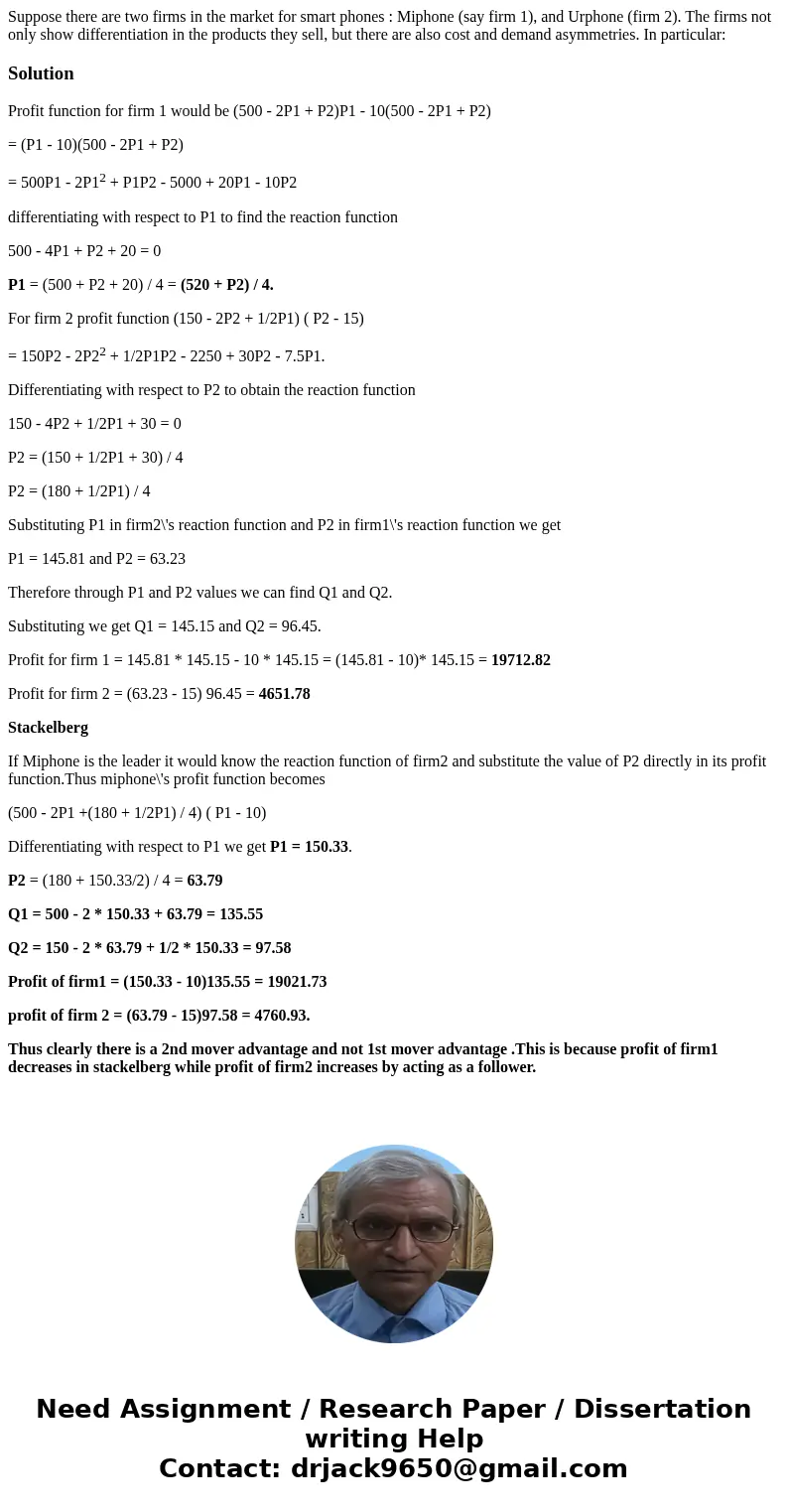Suppose there are two firms in the market for smart phones
Solution
Profit function for firm 1 would be (500 - 2P1 + P2)P1 - 10(500 - 2P1 + P2)
= (P1 - 10)(500 - 2P1 + P2)
= 500P1 - 2P12 + P1P2 - 5000 + 20P1 - 10P2
differentiating with respect to P1 to find the reaction function
500 - 4P1 + P2 + 20 = 0
P1 = (500 + P2 + 20) / 4 = (520 + P2) / 4.
For firm 2 profit function (150 - 2P2 + 1/2P1) ( P2 - 15)
= 150P2 - 2P22 + 1/2P1P2 - 2250 + 30P2 - 7.5P1.
Differentiating with respect to P2 to obtain the reaction function
150 - 4P2 + 1/2P1 + 30 = 0
P2 = (150 + 1/2P1 + 30) / 4
P2 = (180 + 1/2P1) / 4
Substituting P1 in firm2\'s reaction function and P2 in firm1\'s reaction function we get
P1 = 145.81 and P2 = 63.23
Therefore through P1 and P2 values we can find Q1 and Q2.
Substituting we get Q1 = 145.15 and Q2 = 96.45.
Profit for firm 1 = 145.81 * 145.15 - 10 * 145.15 = (145.81 - 10)* 145.15 = 19712.82
Profit for firm 2 = (63.23 - 15) 96.45 = 4651.78
Stackelberg
If Miphone is the leader it would know the reaction function of firm2 and substitute the value of P2 directly in its profit function.Thus miphone\'s profit function becomes
(500 - 2P1 +(180 + 1/2P1) / 4) ( P1 - 10)
Differentiating with respect to P1 we get P1 = 150.33.
P2 = (180 + 150.33/2) / 4 = 63.79
Q1 = 500 - 2 * 150.33 + 63.79 = 135.55
Q2 = 150 - 2 * 63.79 + 1/2 * 150.33 = 97.58
Profit of firm1 = (150.33 - 10)135.55 = 19021.73
profit of firm 2 = (63.79 - 15)97.58 = 4760.93.
Thus clearly there is a 2nd mover advantage and not 1st mover advantage .This is because profit of firm1 decreases in stackelberg while profit of firm2 increases by acting as a follower.

 Homework Sourse
Homework Sourse